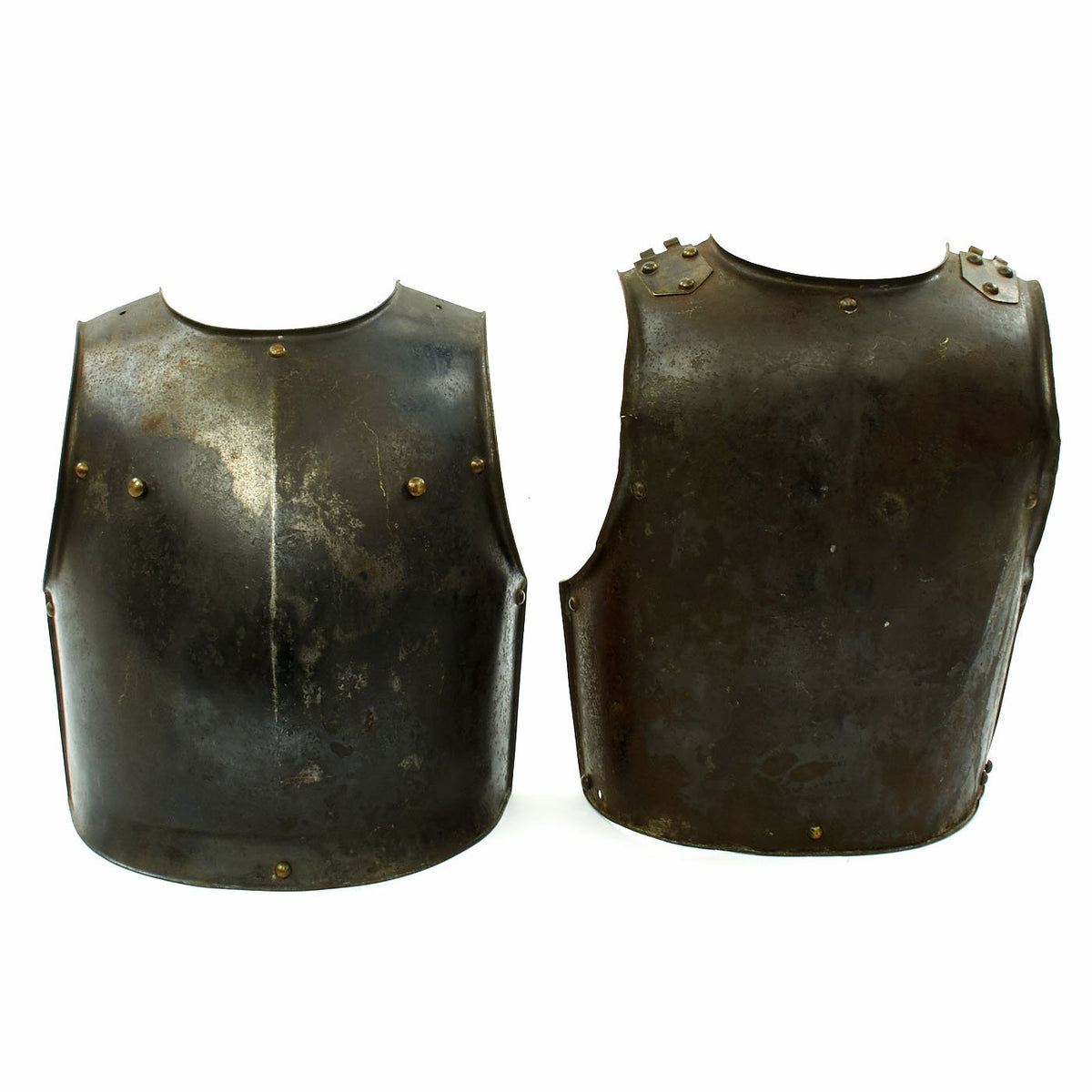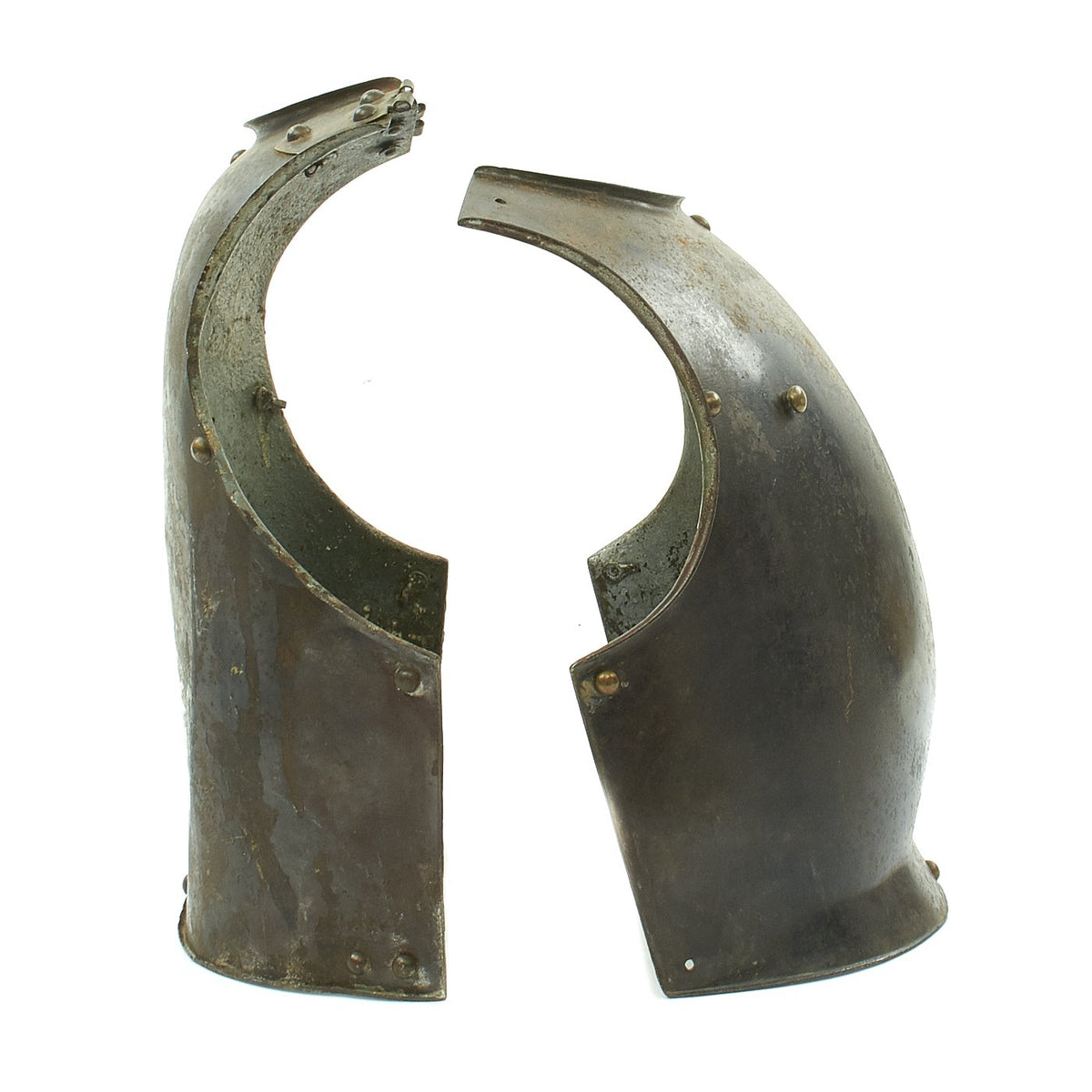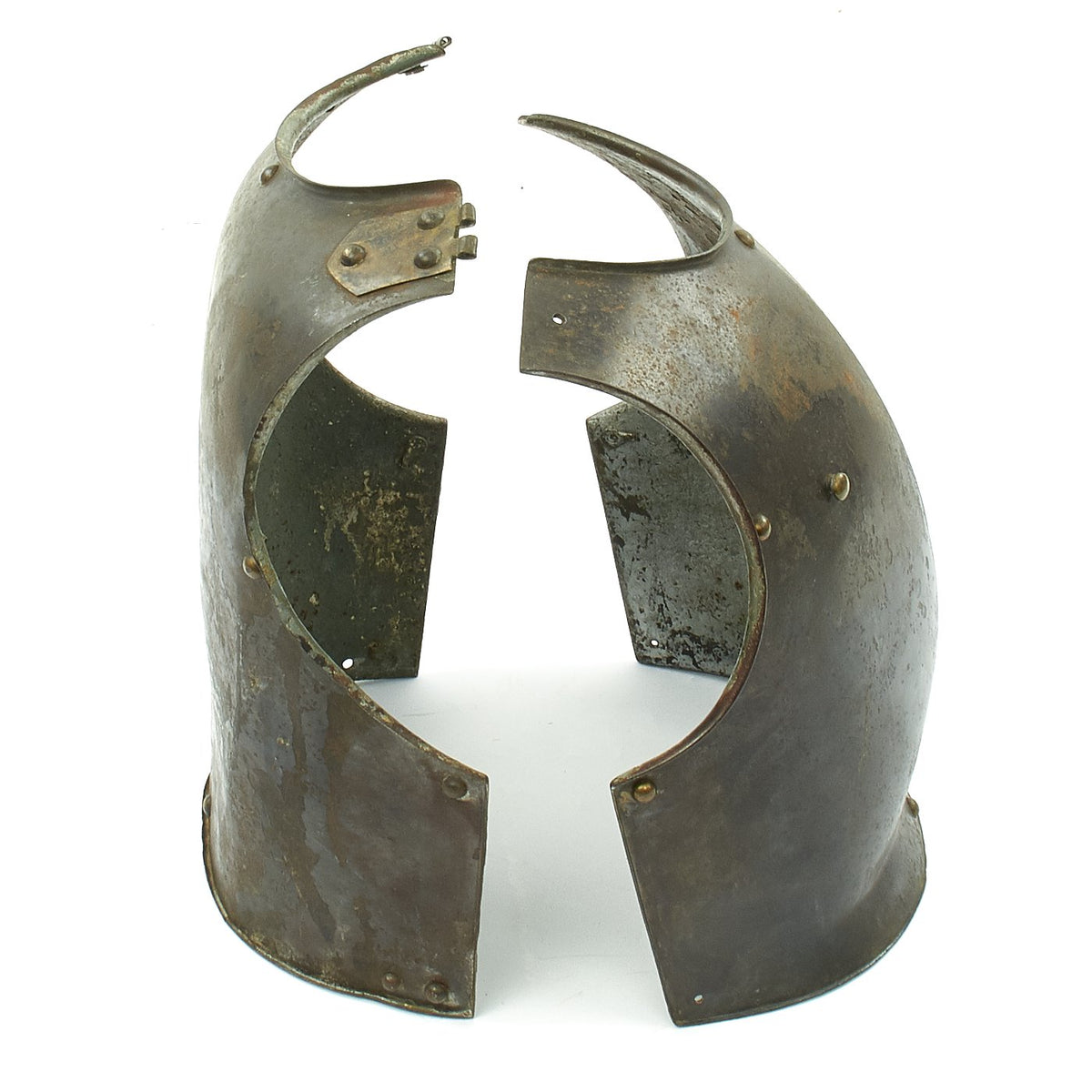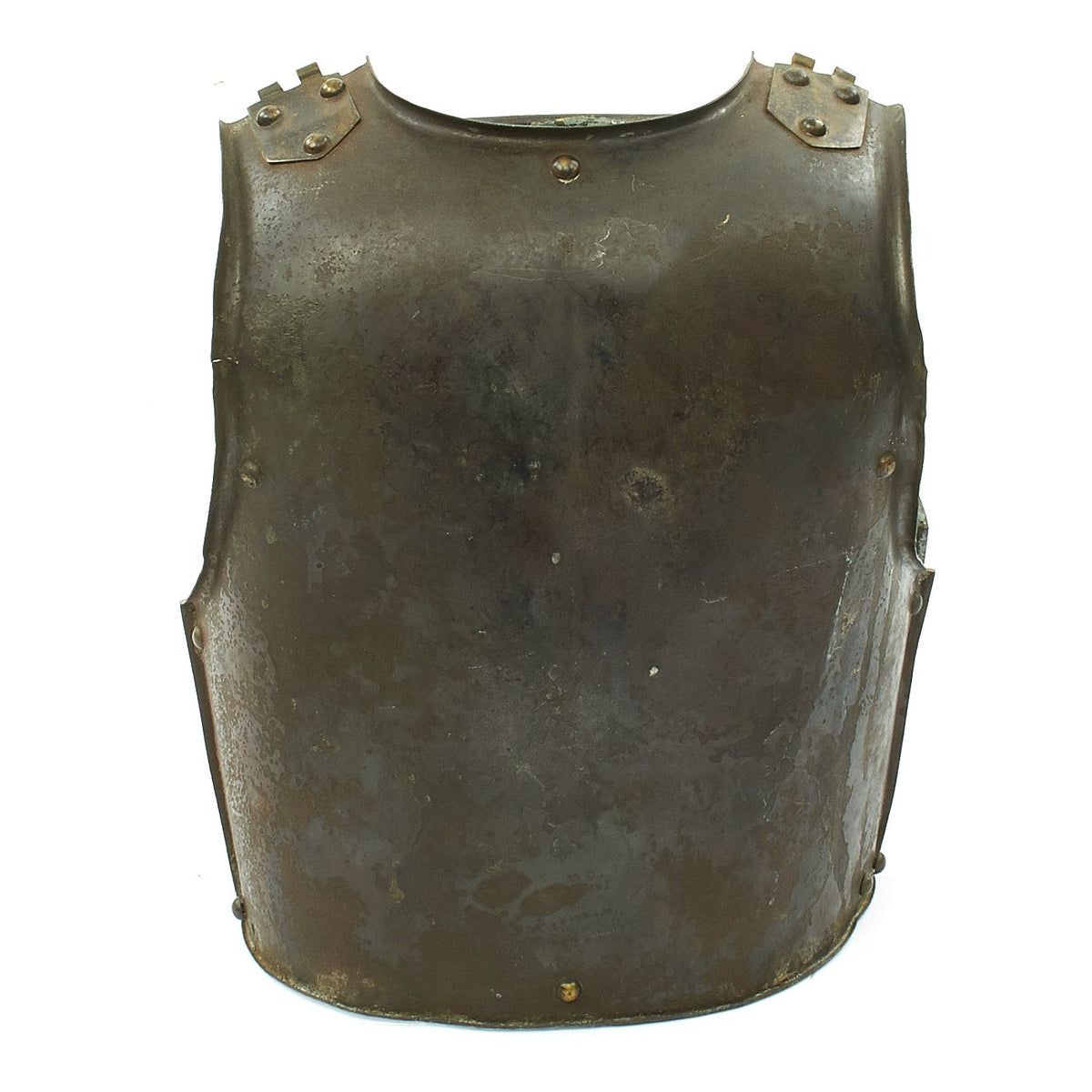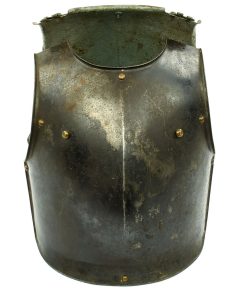Original French 1st Empire Napoleonic Cuirassier Breast and Back Plate – Circa 1810 Original Items
$ 895,00 $ 223,75
riginal Items: Only One Set Available. First Empire French Napoleonic Heavy Cavalryman chest and back plate set without shoulder straps. The front plate weighs nearly three times that of the back plate to provide the necessary extra protection from oncoming attacks. The plates are complete in themselves and bear the serial 2097 to the interior. Really quite hard to find today after 200 years in such basically sound condition.
Cuirassiers were cavalry equipped with cuirass armor and firearms, first appearing in late 15th-century Europe. The first cuirassiers were produced as a result of armored cavalry, such as the men-at-arms and demi-lancers, discarding their lances and adopting the use of pistols as their primary weapon. In the later 17th century, the cuirassier lost his limb armor and subsequently employed only the cuirass (breastplate and backplate), and sometimes a helmet. By this time, the sword or saber had become their primary weapon, pistols being relegated to a secondary function.
Cuirassiers achieved increased prominence during the Napoleonic Wars and were last fielded in the opening stages of World War I. Cuirassiers continue to be employed as ceremonial troops by a number of countries. The French term means “one with a cuirass” (cuirasse), the breastplate amour which they wore.
Though the armor could not protect against contemporary flintlock musket fire, it could deflect shots fired from long-range, stop ricochets and offer protection from all but very close range pistol fire. More importantly, in an age which saw cavalry used in large numbers, the breastplates (along with the helmets) provided excellent protection against the swords and lances of opposing cavalry and against infantry bayonets. It also had some psychological effect for the wearer (effectively making the cuirassier more willing to plunge into the thick of fighting) and the enemy (adding intimidation), while it also added weight to a charge, especially in cavalry versus cavalry actions.
Napoleonic French cuirasses were originally intended to be proof against three musket shots at close range; however, this was never achieved in practice. The regulations eventually recognized this, and cuirasses were subsequently only expected to be proof against one shot at long range.
The utility of this armor was sometimes disputed. Prussian cuirassiers had abandoned the armored cuirass before the Napoleonic Wars, but were reissued with it in 1814. During this period, a single British cavalry regiment (Royal Horse Guards) wore cuirasses during the Netherlands campaign of 1794, using breastplates taken from store.[13] The Austrian cuirassiers traded protection for mobility by wearing only the half-cuirass (without back plate) and helmet.[14] Napoleon believed it sufficiently useful that he had cuirassier-style armor issued to his two carabinier regiments after the Battle of Wagram. Despite being highly advanced from the plate armor of old, the Napoleonic era cuirass was still quite cumbersome and hot to wear in warm weather; however, the added protection that it gave to the wearer and the imposing appearance of an armored cavalryman were factors favoring retention.
Fast Shipping with Professional Packaging
Thanks to our longstanding association with UPS FedEx DHL, and other major international carriers, we are able to provide a range of shipping options. Our warehouse staff is expertly trained and will wrap your products according to our exact and precise specifications. Prior to shipping, your goods will be thoroughly examined and securely secured. We ship to thousands clients each day across multiple countries. This shows how we're dedicated to be the largest retailer on the internet. Warehouses and distribution centres can be located throughout Europe as well as the USA.
Note: Orders with more than one item will be assigned a processing date depending on the item.
Before shipping before shipping, we'll conduct a thorough inspection of the items you have ordered. Today, the majority of orders will be delivered within 48 hours. The delivery time will be between 3-7 days.
Returns
The stock is dynamic and we cannot completely manage it because multiple stakeholders are involved, including our factory and warehouse. So the actual stock may alter at any time. It's possible that you may not receive your order once the order has been made.
Our policy is valid for a period of 30 days. If you don't receive the product within 30 days, we are not able to issue a refund or an exchange.
You can only return an item if it is unused and in the same state as the day you received it. You must have the item in its original packaging.
Related products
Uncategorized
Uncategorized
Uncategorized
Uncategorized
Uncategorized
Uncategorized
Uncategorized
Uncategorized
Uncategorized
Uncategorized
Uncategorized
Uncategorized
Australian WWII Owen MK1 Machine Carbine SMG Custom Fabricated Replica with Sling Original Items
Uncategorized
Uncategorized
Uncategorized
Band of Brothers ORIGINAL GERMAN WWII Le. F.H. 18 10.5cm ARTILLERY PIECE Original Items
Uncategorized
Armoured Fighting Vehicles of the World: AFVs of World War One (Hardcover Book) New Made Items
Uncategorized
Armored Burgonet Helmet & Polearm from Scottish Castle Leith Hall Circa 1700 Original Items
Uncategorized

